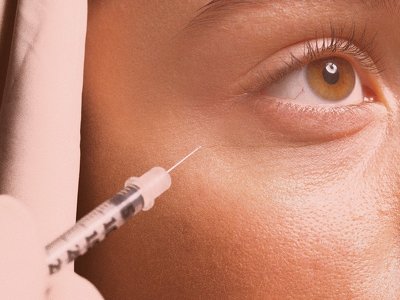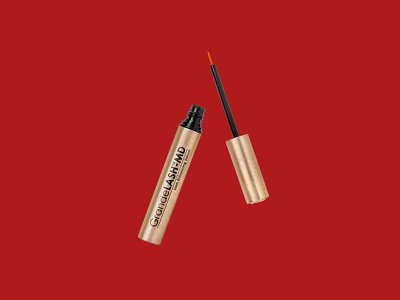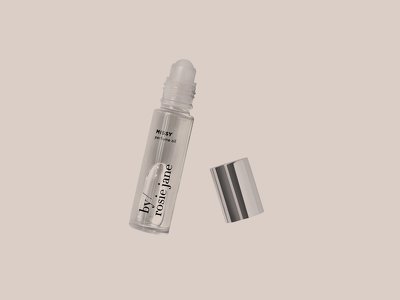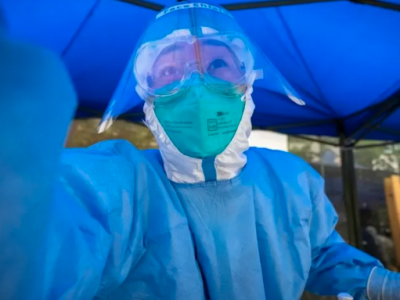With Even More Powerful GLP-1s on the Horizon, Plastic Surgeons Are Upping the Body Contouring Game

It all started with “Ozempic face.” This was, for most, our first exposure to the underbelly of GLP-1 medications—the unforeseen cost of a suddenly slimmer figure. Alluding to the deflation and sagging that can accompany rapid weight loss, the term first penetrated the zeitgeist (or at least our Google search bars) in January 2023 when The New York Times announced: “Those Weight Loss Drugs May Do a Number on Your Face.” The next spike in curiosity about the phrase came three months later, coinciding directly with a Hollywood Reporter piece on the rise of a related phenomenon: “Ozempic body.” As the medications melted away fat, people were confronting flaccid skin that no longer fit their frames.
While GLP-1s are lauded for their myriad health benefits—metabolic, cardiovascular, neurological, psychological—the media buzz not only alerted the public to the drugs’ cosmetic side effects, but signaled a seismic event: Ozempic’s entrée into the world of plastic surgery. (I’m using “Ozempic” here as a catchall for GLP-1s, which now fall under several brand names, including Wegovy and Mounjaro.) As people started looking for ways to get rid of the excess skin, surgical body-contouring procedures became more popular, with liposuction, butt lifts, arm lifts, and thigh lifts having the greatest growth, according to the American Society of Plastic Surgeons (ASPS). For a subset of plastic surgeons, the GLP-1/aesthetics crossover moment also included prescribing semaglutide (the active ingredient in Ozempic and Wegovy) to select patients before body-contouring procedures, like tummy tucks, to help them reach a safe weight for surgery (higher BMIs are associated with a greater risk of complications) and to shrink the visceral fat in their abdomens, allowing for a more dramatic cinching of waistlines.
As more powerful GLP-1s, like tirzepatide (a.k.a. Mounjaro/Zepbound), hit the market and the drugs became more accessible, people began losing more weight faster than ever before—and the demand for tissue-tailoring lifts and tucks soared. GLP-1s became a catalyst for a host of cosmetic procedures that people never wanted or anticipated needing. Even now, “the rapidness of the weight loss catches some people off guard,” says Amaka Nwubah, MD, a board-certified plastic surgeon in Brentwood, Tennessee. “No one warned them, ‘Hey, you’re going to have all this loose, hanging skin afterwards.’” In extreme cases, she adds, “they almost feel a little bit deformed because of the skin.”
With next-generation GLP-1s, like an oral version of Wegovy and injectable retatrutide, poised to launch as early as 2026, “body-contouring procedures will continue to skyrocket,” says Darren Smith, MD, a board-certified plastic surgeon in New York City. More potent than its predecessors, retatrutide activates three receptors—GLP-1, GIP, and glucagon—as opposed to only one (as is the case with semaglutide) or two (like tirzepatide).
“All three receptors are responsible for controlling hunger, satiety, and metabolism, but the glucagon additionally promotes fat burning,” ramping up results, explains Caroline Messer, MD, a board-certified endocrinologist in New York City. “In the clinical trial [for retatrutide], people were losing about 25% of their body weight after 48 weeks.”
“The rapidness of the weight loss catches some people off guard. No one warned them, ‘Hey, you’re going to have all this loose, hanging skin.’”
Based on real-world experience with this class of medications, Dr. Messer says, “the amount of weight loss we’ll see clinically with retatrutide will probably exceed what researchers saw in the trial.” Some doctors tell me they expect the drug to outperform even bariatric surgery, leading to more weight loss in less time. (Bariatric procedures, like sleeve gastrectomy and gastric bypass, alter the digestive system in various ways, restricting food intake, suppressing appetite, and/or limiting nutrient absorption. According to one study, “a successful outcome of bariatric surgery is one that achieves a loss of 50–70% of excess weight or the 20–30% loss of the patient’s initial weight.”)
The cosmetic fallout of GLP-1s isn’t limited to those injecting (and, soon, swallowing) in the name of weight loss. As the indications for these medications broaden, so too does the patient population seeking plastic surgery. “There are a bunch of trials looking at GLP-1s for opioid addiction, for smoking, for alcohol,” says Dr. Messer, and doctors are already prescribing them off-label for these purposes. “I find that most of my patients [using GLP-1s for addiction] require higher doses to really raise up their dopamine enough that they’re not having to use their addiction to spike the dopamine,” she says. (GLP-1s are thought to curb cravings by targeting the brain’s reward pathway, which involves the release of dopamine.) So in these patients, too, weight loss is likely and they could also contend with the unwanted aesthetic effects of Ozempic.
Even today, with still limited indications for GLP-1 use, one in eight Americans say they’ve taken a GLP-1. According to new research from Guidepoint Qsight, 60% of US med spas and 35% of aesthetic physician offices prescribe the medications. Umbareen Mahmood, MD, a board-certified plastic surgeon in New York City, says she’s now even encountering men and women with already-low BMIs who are using the drugs “to lose a few pounds for a big event or beach vacation.” Surprisingly, “many of these patients are still seeing negative aesthetic side effects, likely due to how rapid the weight loss was—those who lose weight gradually tend to have better tissue elasticity and skin retraction—and also because their margin for loss is smaller given that they were already at a healthy weight for their body.” (When someone’s BMI is low to start, she explains, “losing a few pounds can have a significant impact on the little bit of fat you have.”)
Jerry Chidester, MD, a board-certified plastic surgeon in Draper, Utah, tells me that close to half of his patients are currently using a GLP-1 or have in the past. Daniel J. Gould, MD, PhD, a board-certified plastic surgeon in Beverly Hills, puts the number in his practice at 60%. “Only about 10% are extremely high-weight-loss patients, having lost 80 to 100 pounds or more,” he says. “They have a tremendous amount of excess skin, requiring multiple [skin-removal] surgeries.” But the 50% losing far less weight—more like 20 to 30 pounds—still have skin laxity and volume changes in their faces, breasts, and bodies. So it’s no wonder surgeons are innovating quickly to make their body-contouring techniques more seamless for Ozempic patients, employing new techniques and strategies both in and out of the OR for less obvious scars and better healing.
When it comes to body contouring, lifts for removing excess tissue traditionally involve lengthy incisions—like the classic armpit-to-elbow cut of a conventional arm lift or the hip-to-hip slice of a tummy tuck—and wherever a surgeon makes an incision, there will be a scar, which surgeons aim to hide with strategic positioning. Since patients are generally more willing to accept that trade-off following massive weight loss versus, say, a 20-pound change, surgeons are engineering new lift techniques for people who have lost smaller amounts of weight rapidly on GLP-1s.
For patients with minimal loose skin, Dr. Smith has developed short-scar protocols, which combine less invasive lifts and tucks with energy-based skin tightening. A mini arm lift, for instance, requires a small horizontal incision only in the armpit. To address “just a little laxity in the upper thighs,” he can hide the scar in the groin crease rather than extending it down to the knee.
Along with smaller scars, these operations can offer a faster recovery than their traditional counterparts. The key to getting good results with these modified surgeries is internal radiofrequency energy (in this case, BodyTite), Dr. Smith says, which aims to “heat the tissues and upregulate collagen and elastin” to shrink the skin. These energy-based procedures, which involve inserting a radiofrequency-charged cannula under the skin to heat it from within, are performed directly following the lift or tuck, during the same surgery.
But if skin-tightening devices are a critical part of shorter-scar lifts, that could be problematic for the patients who need them most. “These devices predicate on the fact that the patient has good collagen and connective tissues that you can tighten with that energy and that their healing response will be robust enough to trigger the desired tightening,” says Dr. Gould. “I think it’s less likely for energy to be effective in patients who are on these medications, because they often don’t have quality tissues on their side.”
“Patients who are on these medication often don’t have quality skin tissues on their side.”
While Dr. Smith acknowledges that “collagen and elastin production seems to be down in GLP-1 patients,” he says he’s had “great success treating properly selected patients” with this one-two punch of radiofrequency and surgery. “There's really no data either way on this issue of GLP-1s affecting the efficacy of minimally invasive skin-tightening devices,” he notes.
Dr. Chidester, who frequently uses radiofrequency-based Renuvion in body-contouring surgery, says that, in his experience, it does work in certain areas, on select GLP-1 patients, with one exception: “Stretch-marked skin does not do well with any of these energy devices—it just doesn't tighten.” And in GLP-1 patients, “we’re seeing so many stretch marks,” says Ashley Gordon, MD, a board-certified plastic surgeon in Austin. “The fascia [connective tissue] isn’t as strong, and the skin is dehydrated. Everything just feels different.”
To Dr. Nwubah, the difference is most striking in the breasts. Whether she’s placing an implant or tailoring the breasts during a lift, “it’s amazing how much that skin is just
- Last
- April, 28
-
- April, 27
-
- April, 26
-
-
- April, 25
-
- April, 22
-
-
-
-
- April, 16
-
-
-
-
-
- April, 15
-
-
-
- April, 13
-
-
News by day
18 of September 2025





































































































































